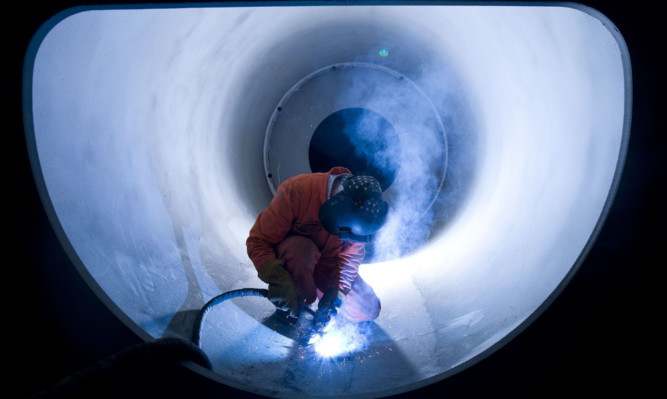Scottish firm Aquamarine Power has taken a lead role in a new industry bid to drive down costs and increase reliability of wave energy technology.
The company and drivetrain and control systems manufacturing specialist Bosch Rexroth have jointly founded a new group to tackle the major barriers to the commercial build-out of the wave energy sector.
The group will concentrate on driving forward the WavePOD device, a sealed offshore generator unit which cables power back to shore, which Aquamarine and Bosch Rexroth are developing and a scale prototype of which is to be tested at Aachen University in Germany.
Among those who have signed up to participate are developers Albatern and Carnegie Wave Energy UK and utility company ESB, which is progressing the European funded Westwave farm off the Irish coast.
The group has also secured input from academia with Peter Stansby, professor of hydrodynamics at Manchester University, having also agreed to be involved.
Aquamarine Power chief executive Martin McAdam said the project had the potential to “transform the wave industry in the same way the internal combustion engine made the motor car possible”.
Louis Verdegem, of Bosch Rexroth, said: “Creating a way of converting kinetic energy into electricity is essential if we are to effectively harness the power of waves.
“Currently however, cost effective transformation of the captured energy into electricity remains beyond the industry’s grasp.
“This is due in part to the fragmented nature of current research and development, which is largely commissioned by individual manufacturers.
“Through this collaboration we expect the use of standardised components and system architectures to accelerate learning and propel the industry forward.”
Dr Sian George, of trade body Ocean Energy Europe, said: “The WavePOD project provides a vehicle for ocean energy developers from all over Europe to work together and tackle problems in an efficient and cost effective way.
“We would encourage as many developers as possible to get involved in this project and hope to see this partnership approach applied to other barriers.”
